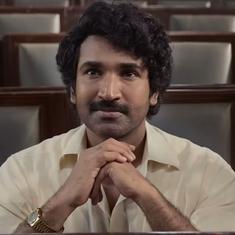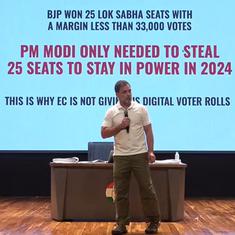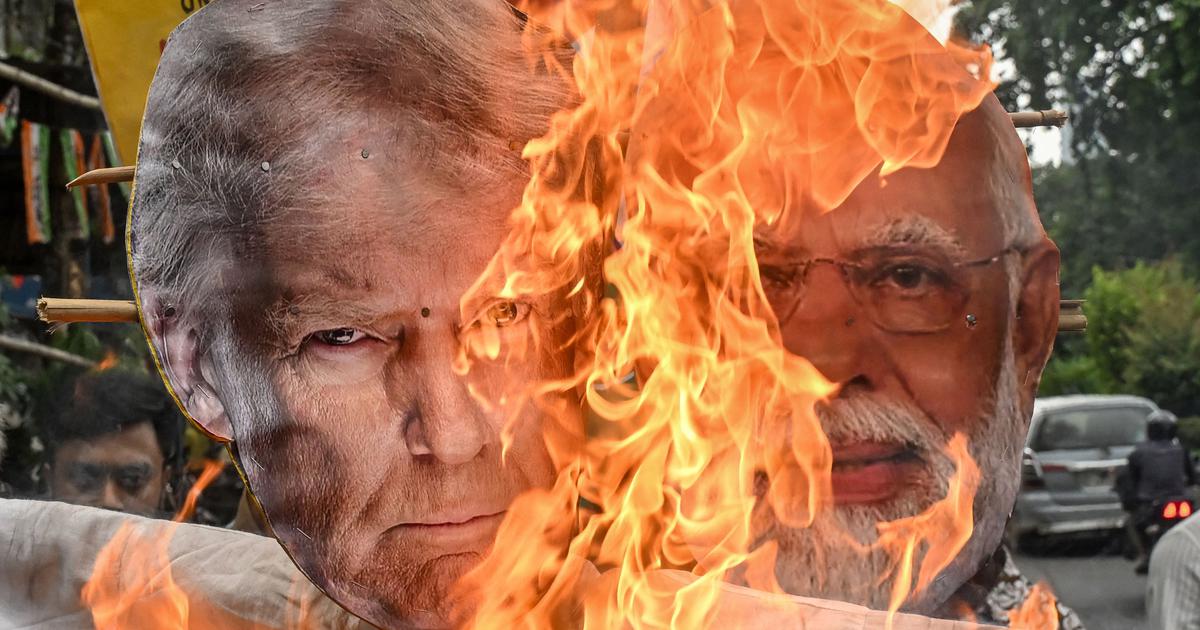A series of recent statements and actions by the Donald Trump administration targeting India has left the dominant section of the Indian strategic community with a feeling of betrayal.
The US signalling its distancing from India and its aspiration for a decisive strategic role in South Asia could not be clearer.
To get his way, Trump is trying to bully and humiliate India almost on a daily basis. He is unlikely to stop until India bends.
Starting with public humiliation and chaining illegal Indian migrant deportees, Trump has repeated claims (30 times so far) of how he successfully brokered the ceasefire after the four-day Pakistan-India war following Operation Sindoor.
He also claimed that it was his trade deal threats that calmed both nations. He is thus continuously challenging India’s long-standing position of no foreign intervention in India’s bilateral matters.
To make matters worse, Trump has been on a tirade against India’s economic policy calling India the “king of tariffs”.
This has been followed by the imposition of 25% tariffs on all Indian exports with the threat of additional penalties unless India stops importing Russian oil and military hardware.
These actions were accompanied by humiliating and derogatory language: “I don’t care what India does with Russia. They can take their dead economies down together, for all I care”.
Thereafter, President Trump declared the US and Pakistan had concluded a deal to work together to develop Pakistan’s oil reserves, saying “Who knows, maybe they’ll be selling oil to India someday!”.
General Asim Munir’s White House lunch with Donald Trump, just as India was pushing to label Pakistan a sponsor of terrorism, was clearly to show that the US would again use the Pakistani army to bolster US policies in Central and West Asia. That is a game at which Pakistan is adept.
In addition, India’s attempt to have the US and the West in its corner was shattered, for instance when India lost the election post of vice chair of the Executive Board of UNESCO to Pakistan.
False hopes
For decades the Indian leadership and its strategic community has been promoting closer strategic relations with the US.
India did whatever it took to do this – from developing an Indian NRI lobby in the US and maintaining strict neutrality on US support for Israel’s genocidal war on Gaza to issues that the US promoted globally. However, now President Trump wants much more.
The US has once again started viewing the Pakistani army as a reliable instrument for its policy of interventions in the Asia-Pacific region and it seems it will continue to be privileged as such. Pakistan has a time-tested relation as the US’s favoured gendarme.
The Pakistan army has run Pakistan’s foreign policy since its very formation. Unlike India it was always aligned. Pakistan was part of US military pacts of South East Asia Treaty Organization and the Central Treaty Organizations (now defunct) in the 1950s and 60s. It was instrumental along with the US in developing the Taliban and Mujahideen that led the revolt which overthrew the Soviets during their occupation of Afghanistan in the 1980s.
In the post 9/11 decade of US military interventions and forever wars in Afghanistan and the Middle East, Pakistan was a key base for US manoeuvres even as it housed the wanted terrorist Osama Bin Laden near its own national military academy. The General Munir-Trump lunch revived this partnership. The US will not allow India to isolate Pakistan internationally. So, India’s years of effort have been side-lined.
The US has also once again started pairing India and Pakistan. This is something that India does not favour, given the scale of differences especially in the economic sphere – India is a rising medium level market economy and Pakistan has taken and rescheduled its International Monetary Fund debt 25 times.
However, the US interest is clearly to revive its empire-like reach, project power globally and retain its dominance. This is what Trump’s Make America Great Again (MAGA) is about. In this agenda, India can be a market for US products and Pakistan, one of its many strategic arms. The US will, therefore, play both India and Pakistan – something that India will have to accept.
The US also seeks to be the main balancing power and geopolitical influencer in the South Asia region. It was with this in mind that the US supported the Pakistani Army when they conducted a regime change ousting Pakistan’s popular prime minister, Imran Khan.
The former Bangladeshi Prime Minister Sheikh Hasina had also claimed a US hand in the populist student unrest and overthrow of her regime and the installation of the pro-American but hostile to India NGO-economist Mohammad Yunus.
The US is also aware of the Pakistan-China alliance and how Pakistan has used this to its advantage. It was Pakistan that brokered the US-China détente in the 1970s with Henry Kissinger at the helm. Perhaps once again, as Trump wants an invite from President Xi Jinping, Pakistan may be expected to facilitate it.
Time for rethink
What does this signify for India, who for the last three decades since its shift to globalisation in the early 1990s, prioritised its relations with the United States while turning a blind eye to US proximity with Pakistan, often at the cost of other relations especially to the Global South?
One, that hyper-nationalism will not work in foreign policy especially when one must counter the hyper-imperial superpower.
Two, that India has put on the back burner several long-standing beliefs of the country’s time-tested foreign policy. These included being pro-development but with awareness that colonialism will always take on new forms of extraction; a focus on peace and disarmament; and not getting obsessed and viewing all foreign policy through the lens of one militarised neighbour. This allowed India to diversify its foreign relations and not give up its traditional relations, while building new ones, but always emphasising that it was an integral part of the Global South.
The Indian elite, however, is still committed to the US and views it as an important partner. Nearly 18% of Indian exports are to the US and Indian students crowd US universities. India also respects US soft power and has no interest in disrupting US progress.
However, the US needs to do the same. While efforts will have to be made to undo the current humiliating phase, the Indian leadership, hopefully, has also understood that the US would like to promote and facilitate American imperial interests in South Asia.
These are usually not in India’s interest.
Anuradha Chenoy is Adjunct Professor Jindal Global University, Haryana
Originally published under Creative Commons by 360info™.










